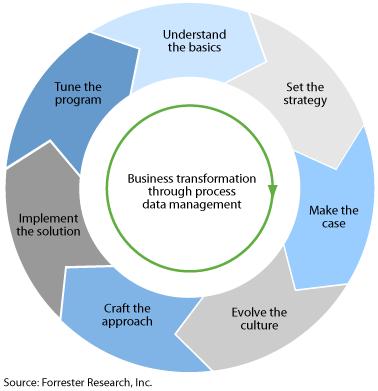How Complete Are Your BI And Data Management Strategies?
Data management and BI professionals often feel pressure from senior management to propose and start implementing master data management (MDM), data quality, data warehousing, business intelligence (BI), analytics or other data management strategies quickly, without time to perform the necessary due diligence. These “fire drill” strategy sessions may arise as a reaction to a compelling event like a compliance or regulatory action, the need to support better management planning and decision-making during economic struggles, or even by the arrival of a new senior executive (e.g., CEO, CIO, CFO, COO, CMO) looking to make their mark on the organization by driving this strategy.
Unfortunately the program drivers on the hook to deliver these catch-up strategy planning initiatives tend to disregard many best practices in the process. Can you blame them? Many of them have been the organizational evangelists that have fought for months – or even years – to get sponsorship and investment to deliver these solutions. When that support finally arrives, they’d be crazy to turn it away just because the timelines are a bit aggressive, right? Well yes, they should push back if the solution they’re building will not:
- Deliver a clear ROI to deliver clear business value with a line of sight to how the capabilities will improve efficiencies, reduce cost, reduce risk, increase revenue, or strategically differentiate your organization. Think that executive sponsor will have your back if you can’t prove the value? Think again.
- Scale and offer the flexibility and agility to support the next set of incremental requirements or users that will inevitably come along.
- Guarantee end user adoption and acceptance of the new solution that will likely introduce new processes, technologies, and/or organizational changes.
- Consider architecture and governance dependencies that can likely derail the successful deployment and support of the solution.
But clearly it’s not practical – and could be potentially career limiting – to “just say no”. In order to increase your confidence that you’ve dotted all the I’s and crossed all the T’s when outlining your program strategy (and saving your job in the process), take a look at the research my colleague Boris Evelson and I recently published titled, “How To Build An Effective BI And Data Management Program Framework”.
In this research, Boris and I introduce Forrester’s Process Data Management Framework (see graphic for high level view) in the form of a best practice guide and readiness/maturity checklist. Some of the key themes of the framework suggest you consider (among many other components):
- Scoping business domain impact of the initiative
- Assessing your maturity and readiness
- Designing your data governance foundation
- Building an effective business case with a clear ROI to secure executive buy-in
- Developing a comprehensive change management plan
- Drafting a scalable architecture and solution design
- Selecting optimal hardware, software and service provider partners
- Ensuring implementation and program management best practices
- Measuring and monitoring effectiveness, value creation and continuous improvement requirements of the program and solution

Use the framework outlined in the research to validate your approach to defining, evangelizing, implementing, and supporting your vision for using strategic investments in data management and BI to transform your business. This will help you move from isolated projects to strategic programs that deliver business insight from trusted sources within the context of your most critical business processes.
Hope this research proves valuable, and we welcome any comments or suggestions you might have to evolving it even further.